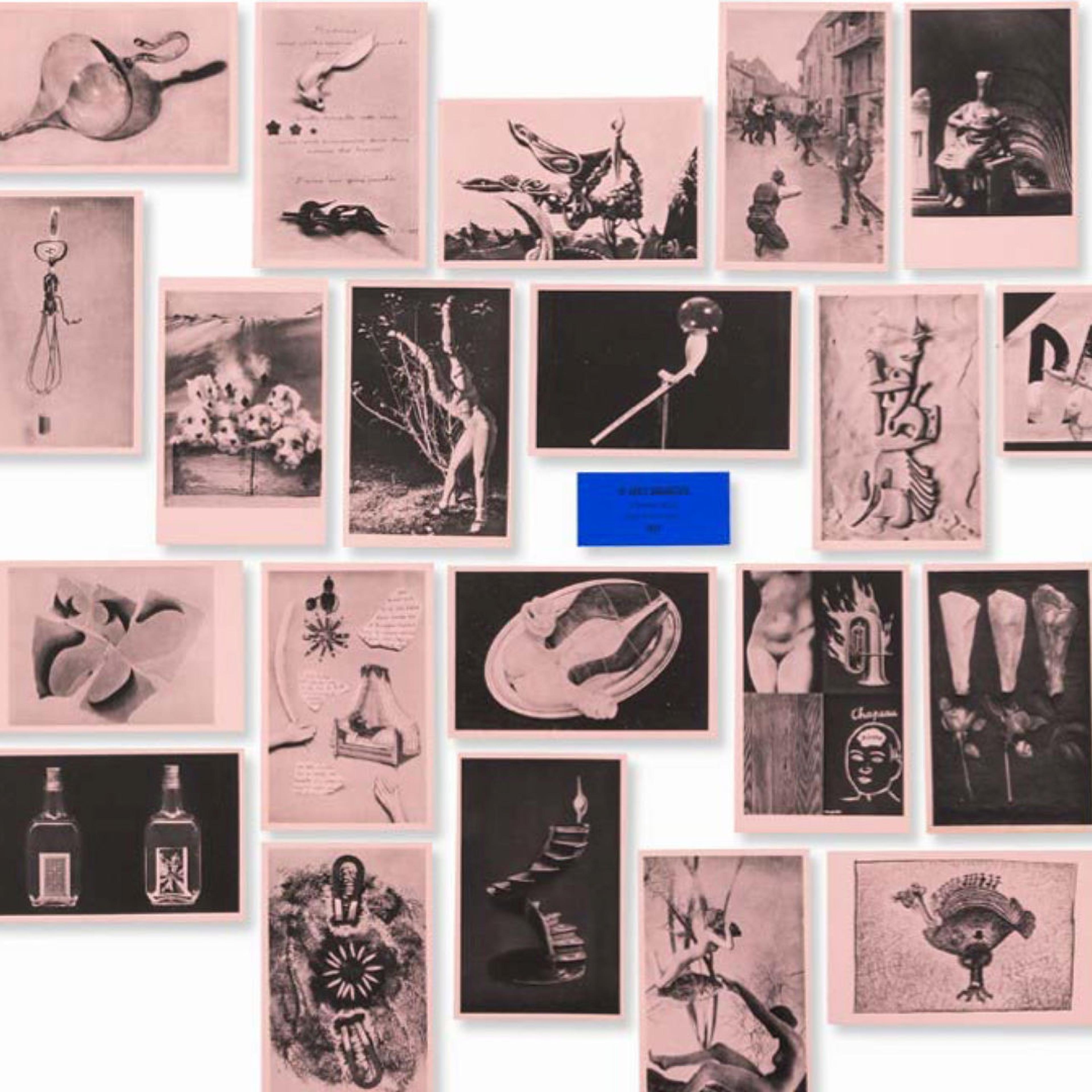One of my many satisfactions at the Thomas J. Watson Library at The Met is working with curators and library staff to ensure that we are supporting the years-long research behind special exhibitions. Our extensive collections are mined and explored, and we will often track down and acquire additional material to facilitate research, including rare and obscure titles. The Met’s recent exhibition Surrealism Beyond Borders, now on view at Tate Modern in London, offered many exceptional opportunities for collaboration and collecting building.
The summer of 2020 was a time of crisis. The pandemic was raging and the murder of George Floyd ignited protests throughout the country. The Met responded to financial uncertainty and closure by cutting budgets and laying off staff. During this difficult time, I received an email from Stephanie D’Alessandro, Leonard A. Lauder Curator of Modern Art and one of the exhibition’s co-organizers. Stephanie had taken a deep dive into Watson’s holdings and identified about eighty original publications that were not in the collection. She tracked them down in libraries around the world and asked if I had colleagues who could expedite the loans. While the list included many books that would be difficult to find, I realized that this was a significant opportunity to acquire key publications of international Surrealism for the library’s collection.
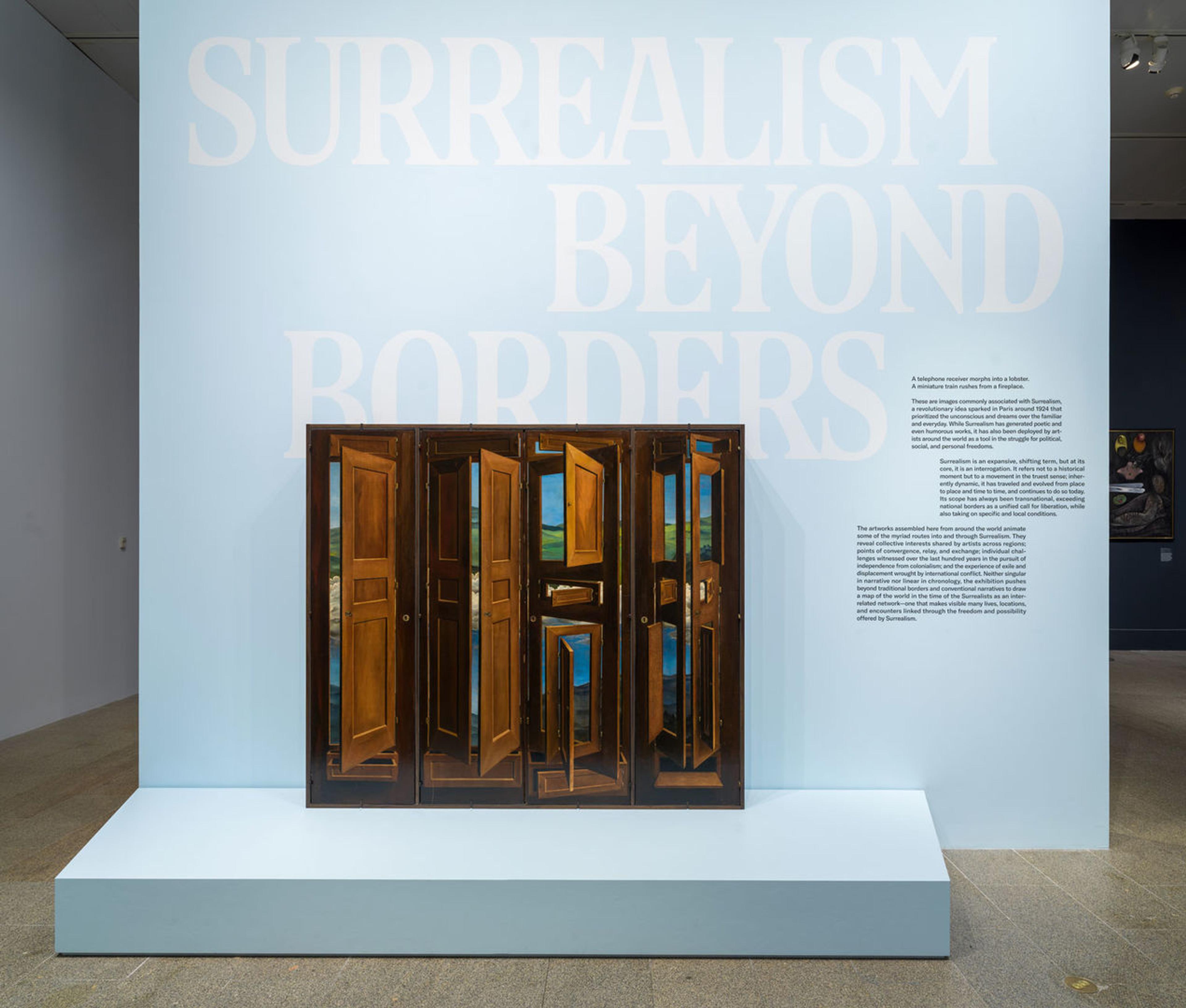
Installation shot of Surrealism Beyond Borders, which was on view at The Met from October 11, 2021 through January 30, 2022
The exhibition’s approach to Surrealism aligns with Watson’s long-standing goal of expanding traditional narratives and acquiring publications that support a global history of art. Lockdown in New York offered extended time at home to search the online offerings of booksellers and send inquiries about the titles we hoped to purchase. The Surrealism project became an uplifting delight at the end of my days; the search for these publications was more engaging and satisfying than evening entertainment on Netflix, and sometimes even exceeded the pleasure of viewing The Metropolitan Opera on demand.
In August 2020, I was able to travel to France. The borders were closed to Americans, but an exception was made because I was traveling with my daughter, who has a French passport, to meet my wife, who is French, already in Paris. While there, I visited booksellers and even the Salon du Livre in early September, acquiring many French publications in addition to early Surrealist titles published in Prague, Budapest, Brussels, Cairo, Santiago, and Chile.
Stephanie’s desiderata became a mission for me. She and Sean O’Hanlan, research associate in the Department of Modern and Contemporary Art, provided the spirit of warm collegiality that I often missed while working offsite. My colleague, Holly Phillips, assisted with many practical aspects of acquisitions. When Watson reopened to staff in late August 2020, we began what we called the “dig out” of the many orders that arrived during the Museum’s closure, including some of the Surrealist titles. Yukari Hayashida, Andrijana Sajic, and Shayla Nastasi managed the necessary conservation treatment and later installed nearly one hundred publications that are currently part of the exhibition. Several of these key works are included below.
George Hugnet, an innovative and active promoter of Surrealism, published La Carte Surréaliste (First Series) in 1937. Postcards were an innovative method of spreading the ideas and images of Surrealism, and the ones included here illustrate previously unpublished work of artists including Jean Arp, Hans Bellmer, André and Jacqueline Breton, Salvador Dalí, Roland Penrose, Pablo Picasso, Man Ray, and Yves Tanguy. The total edition was six sets of sixty postcards printed on different paper colors. Our set is on pink woven paper and retains the original blue title label. A year before the publication of the Surrealist postcards, Hugnet contributed two essays to the catalogue of Fantastic Art Dada and Surrealism, organized by Alfred Barr at the Museum of Modern Art. Hugnet broke with Breton in 1938 and concluded his work as a promoter of Surrealism.
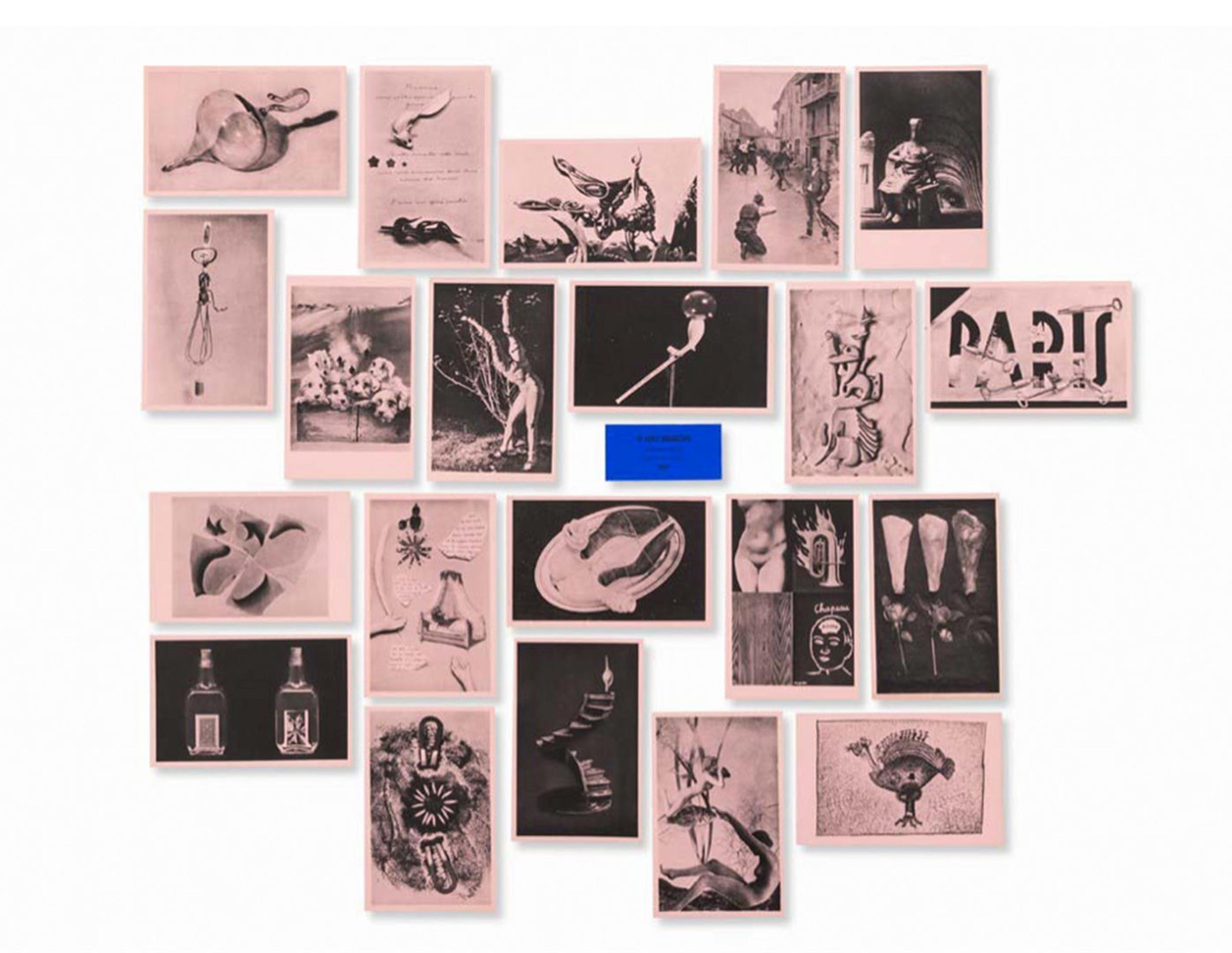
La Carte Surrealiste: Première Série (Paris: Georges Hugnet, 1937), Gift of Friends of the Thomas J. Watson Library. Photo credit: Artnet
Similarly, small ephemeral leaflets, known as Papillons, circulated in 1924 and 1925. Created by Breton’s Bureau de Recherches Surréalistes (Bureau of Surrealist Research) in Paris, the small leaflets could easily attach to street posts or walls in a café. Each had a short message: Si vous aimez l’amour, vous aimerez le surréalisme (If you love, you will love Surrealism), for example, or: Vous qui avez du plomb dans la tête fondez-le pour en faire de l’or surréaliste (You who have lead in your head, melt it to create surrealist gold). Another reads Parents! Racontez vos rêves à vos enfants (Parents! Tell your children about your dreams).
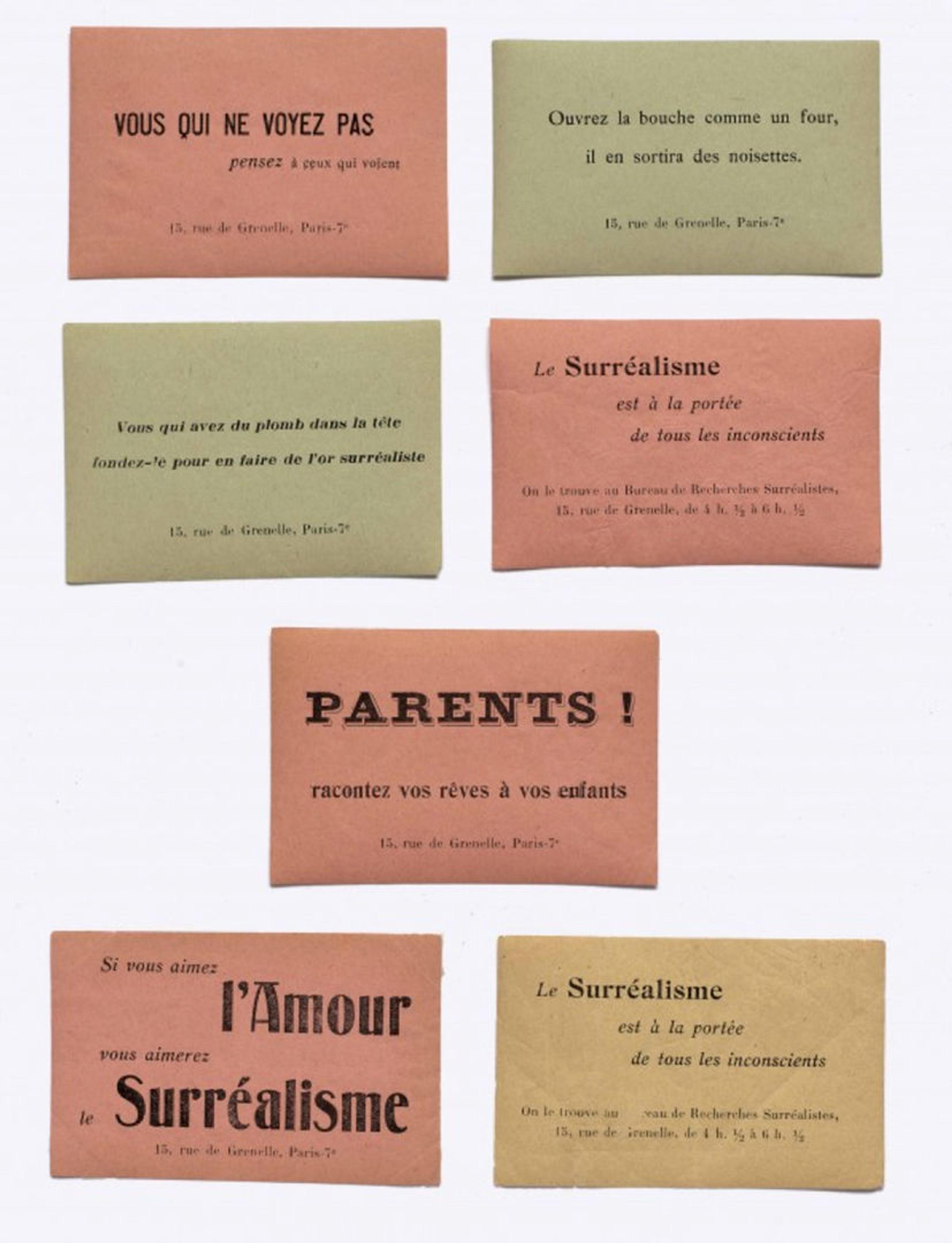
Papillons surréalistes, Paris 1924. Gift of Friends of the Thomas J. Watson Library. Photo credit: Museum Boijmans Van Beuningen
Anthologies were another popular mode of disseminating Surrealist thought. Unicornio (Bicórnio, Tricórnio, Tetracórnio, Pentacórnio): Antologia de Inéditos de Autores Portugueses Contemporâneos, was published between 1951 and 1956. The five volumes of this anthology are the earliest expression of Surrealism in Portugal as an artistic and literary movement. It was published under the direction of , an art critic and historian who played a leading role in the emergence of Surrealism in Portugal. The fragile covers are the work of participating artists. Issue one’s cover is a collaborative work by Fernando Azevedo, Fernando Lemos, and Marcelino Macedo Vespeira.
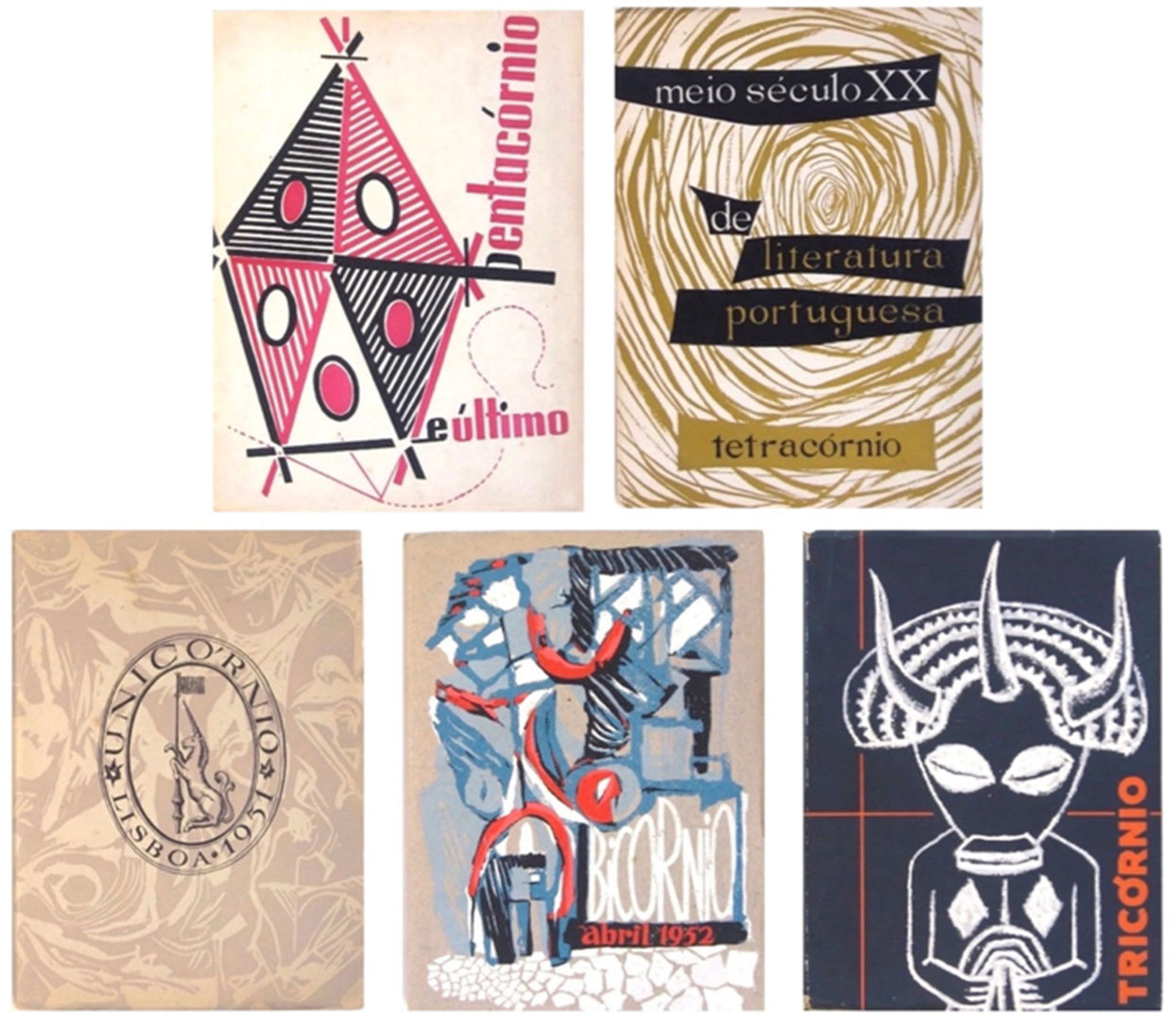
Unicórnio: Antologia de Inéditos de Autores Portugueses Contemporãneos (Lisboa: Ediçao do autor ... Composto e impresso na Imprensa Libanio da Silva, (1951–56), Gift of Friends of the Thomas J. Watson Library
Leitmotiv: Boletin de hechos & ideas (1942–43) was a short-lived journal of two numbers, the first of which was published in Santiago, Chile, in December 1942. (A double and final issue was released in December of the following year.) A successor to Mandragora, Leitmotiv took a more global approach to Surrealism. The articles demonstrate Surrealism taking root in Chile and express the international nature of Surrealism through articles and notes on Surrealist themes and exhibitions in Europe and elsewhere. Each of the three issues contains a poem in French by Benjamin Péret. The first issue had a Portuguese translation of André Breton’s Prolegomena to a third manifesto surrealist or not (Prolegomenos a un tercer manifesto del Surrealism o no).
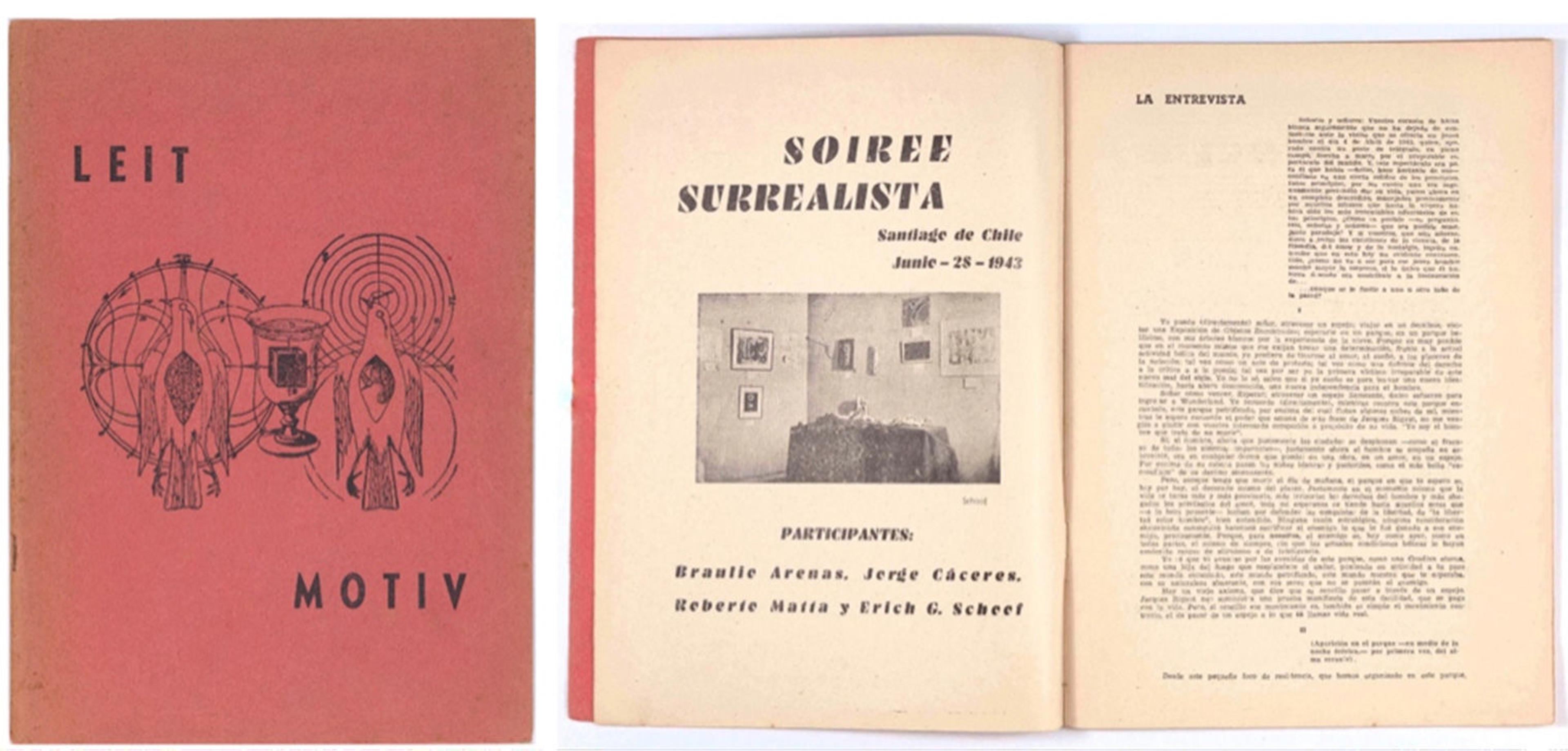
Leitmotiv: Boletin de Hechos & Ideas (Santiago, Chile, 1942), Desiree and Olivier Berggruen Fund
Shuzo Takiguchi (1903–1979) was a poet, critic, artist, and the leading figure of Surrealism in pre- and postwar Japan. He corresponded with André Breton and translated texts related to Surrealism. Takiguchi organized, edited, and contributed to the catalogue of the landmark International Surrealist Exhibition in Tokyo in 1937, which later traveled to Kyoto. Works bynearly fifty European artists were shown, including Bellmer, Breton, Giorgio de Chirico, Dalí, Óscar Dominguez, Leonor Fini, Stanley William Hayter, Dora Maar, René Magritte, Joan Miró, Henry Moore, Paul Nash, Penrose, Picasso, Man Ray, Remedios Varo, Jindrich Styrsky, Toyen, and Julian Trevelyan. Watson’s copy of this classic catalogue of the first Surrealist exhibition in Japan is included in the current exhibition.
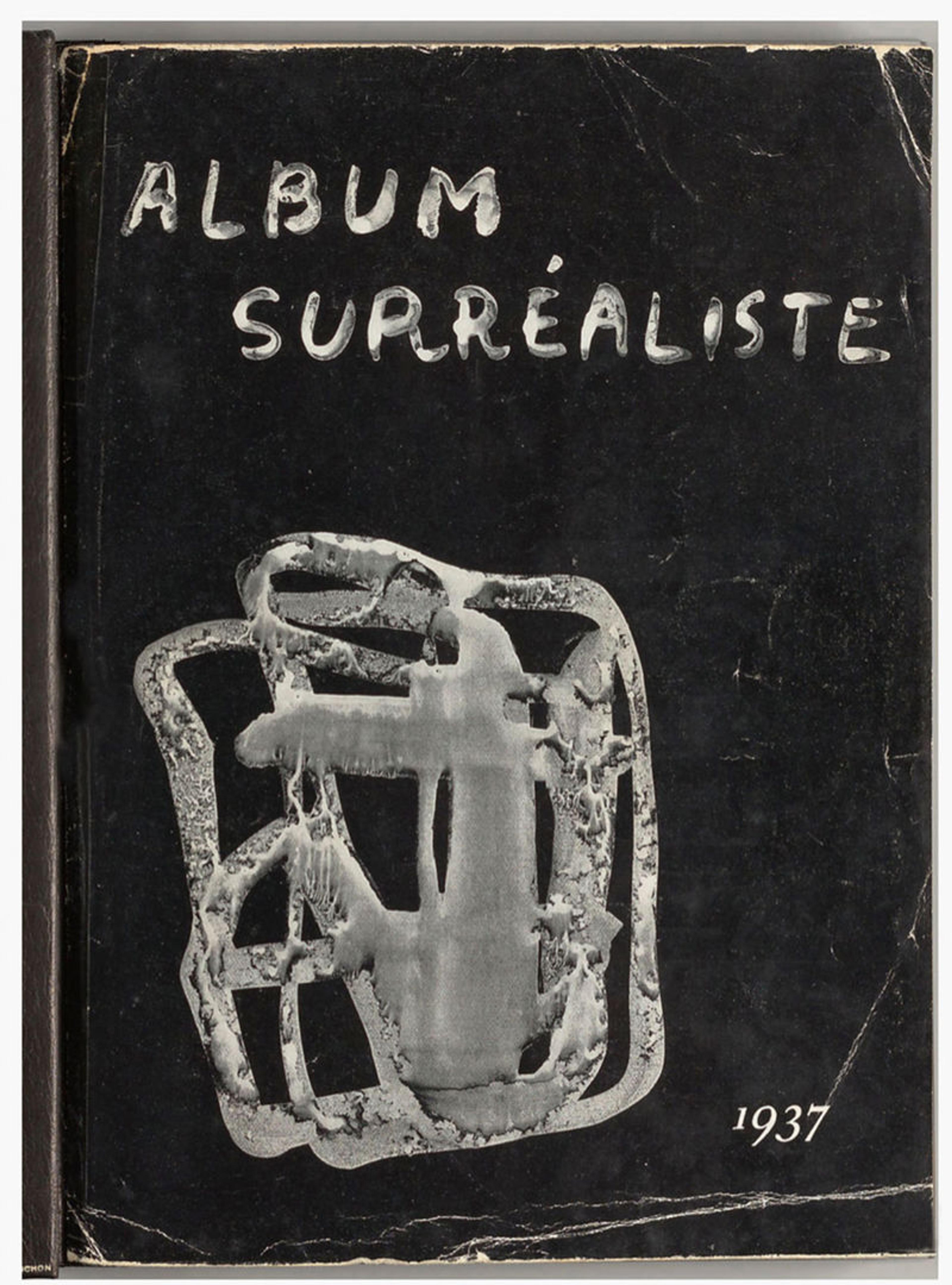
Album surréaliste (Tōkyō: Shunchōkai, Shōwa 12 1937), Alexandra Munroe Fund
Swedish artists were not immune to the gospel of Surrealism. The 1936 London International Surrealist Exhibition exhibited the works of artists from fourteen countries, including two from Sweden. A year later, the Halmstad Group exhibited approximately seventy paintings at the Nordic Surrealist exhibition in Lund; however, it appears that no catalogue was published to document this seminal exhibition.
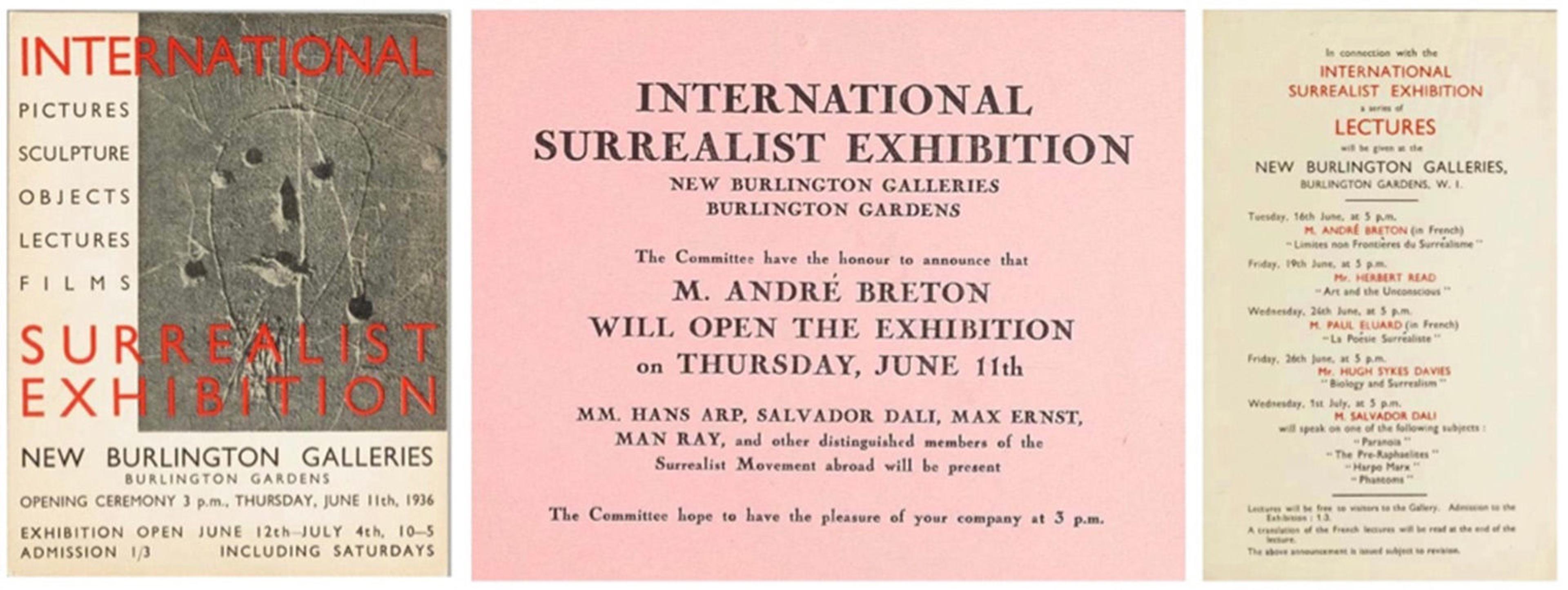
Exhibition announcement, invitation, and broadside to the International Surrealist Exhibition, New Burlington Galleries, 1936, Gift of Friends of the Thomas J. Watson Library
Postwar developments are documented in the catalogue Skånsk avantgardekonst (Skånsk avant-garde art) (1949)from the Malmö Museum. The exhibition included a group of Swedish artists including Karl Bertil Gadö, Carl Otto Hultén, Anders Österlin, and Gösta Kriland. In 1951, Surrealistisk manifestation was held at Expo Aleby in Stockholm; organized by Wilhelm Freddie and Gösta Kriland, the exhibition featured sixty-two works by members of the Swedish painters group Imaginisterna and other Nordic artists, alongside established artists such as Jean Arp, Victor Brauner, Max Ernst, and Yves Tanguy. Both catalogues are exceedingly rare. Watson appears to hold the only copy of Surrealistisk manifestation in the United States.
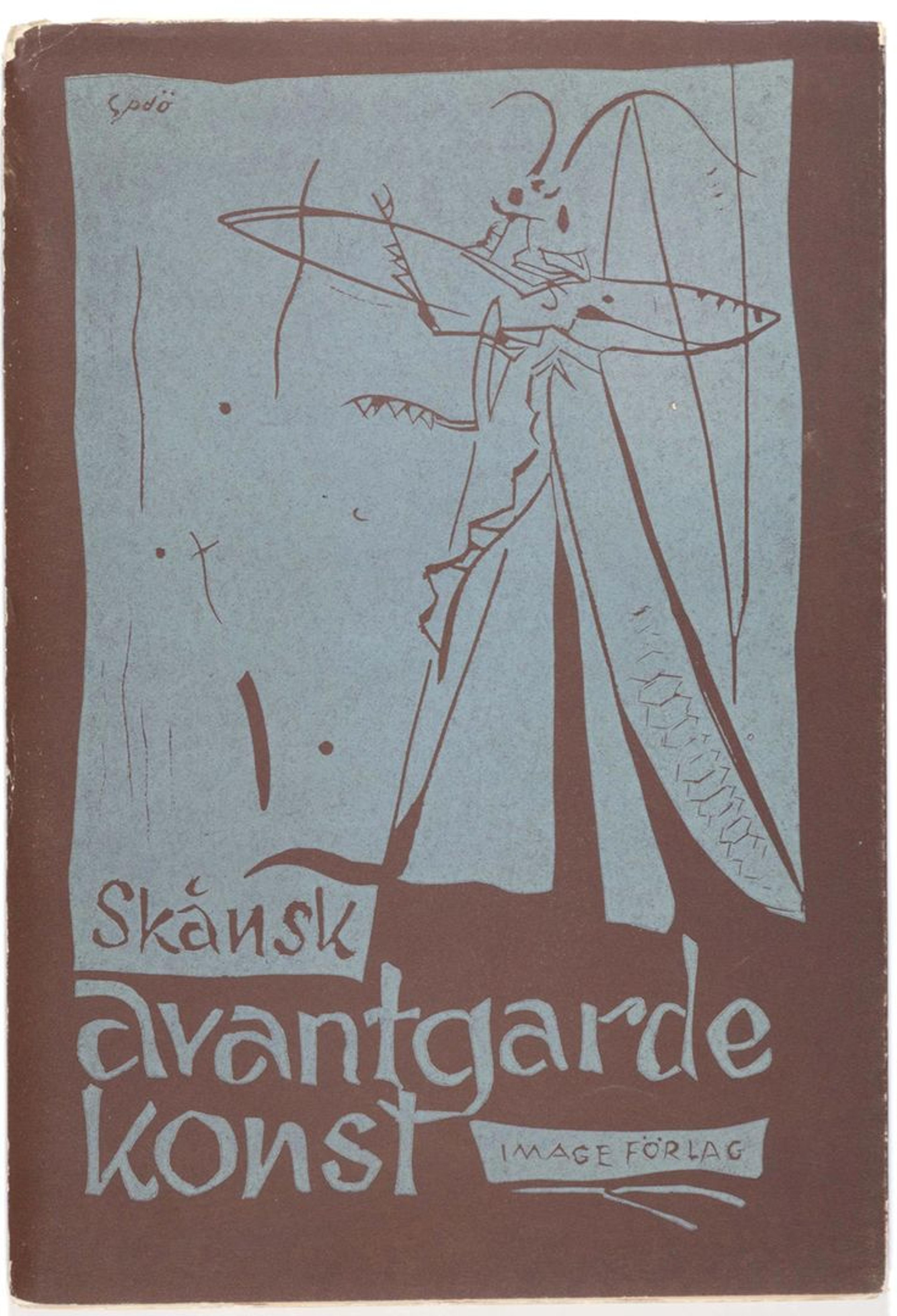
Skånsk Avantgardekonst (Malmö: Image förlag, 1949), Gift of Friends of the Thomas J. Watson Library
Broadening the scope of the Surrealist collection offered many insights and discoveries. Chicago Surrealism was a movement unknown to me, for example. From the 1960s and continuing through the present, Chicago Surrealists have engaged in multiple dimensions of countercultural and social protest activity. The publication and distribution of posters, flyers, leaflets, books, and journals such as The Rebel Worker (1964–68) were key components in promulgating their political program and strategy. We were fortunate to locate and acquire many publications that had recently come on the secondhand market, including many works from Black Swan Press/Surrealist Editions, which started in 1965.
Our collection was significantly enhanced by an important gift from Penelope Rosemont who, along with Franklin Rosemont, was among the founders of Chicago Surrealism. A writer, editor, publisher, and visual artist, Penelope Rosemont is one of the most active and prolific members of a movement that blends radical resistance and social protest with the antiauthoritarianism and challenge to the status quo characteristic of Surrealism. Thanks to Rosemont’s generous donation, Watson Library now offers a substantial collection of publications from this fascinating group of countercultural artists, writers, and activists.
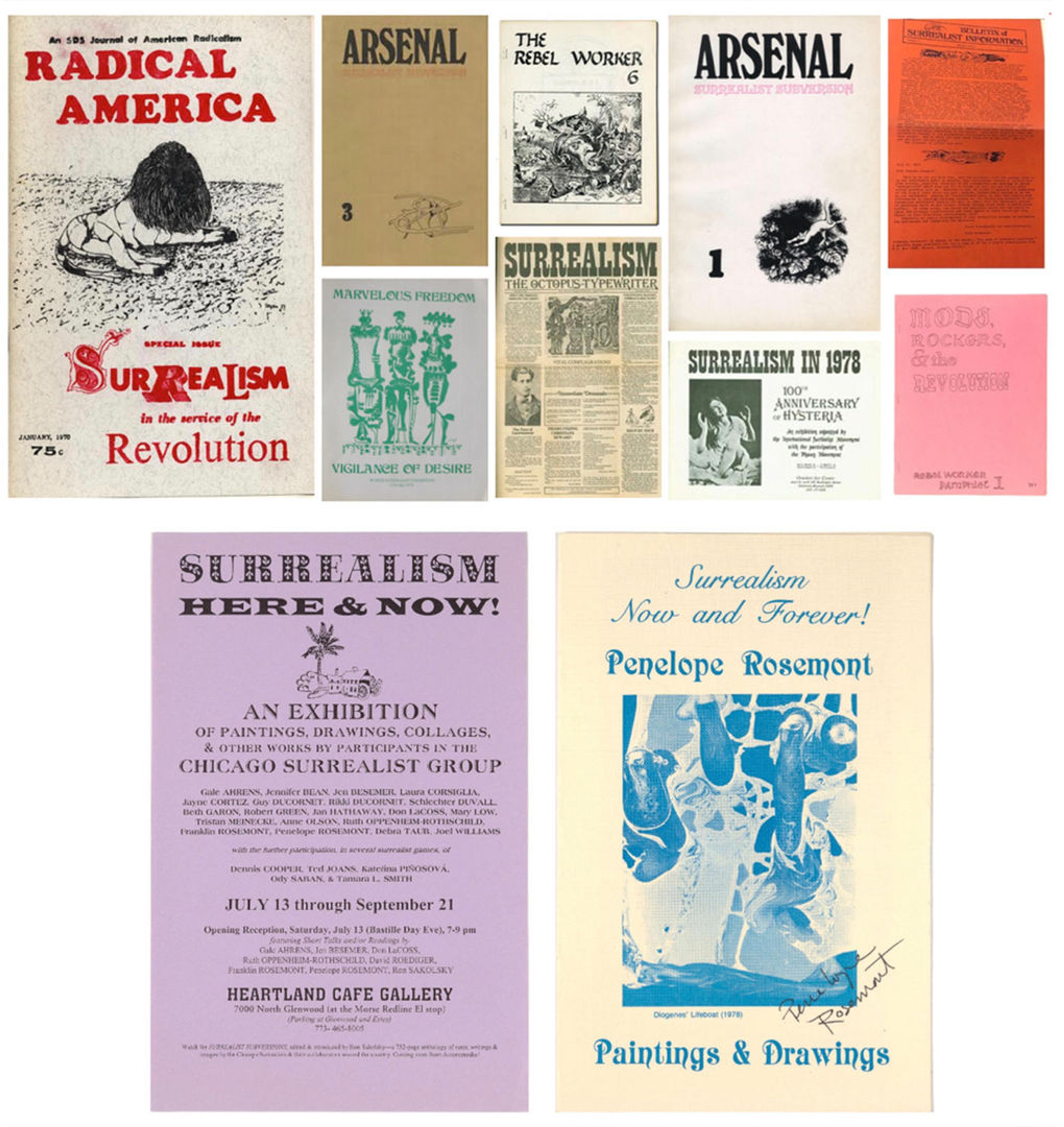
Chicago Surrealist publications 1964–2002, Gift of Friends of the Thomas J. Watson Library, Gift of Penelope Rosemont
This brief account of Watson Library’s acquisitions in support of Surrealism Beyond Borders describes only a few of the publications we were fortunate enough to add to our collection. I am grateful to the Friends of Watson Library for providing funding for more than one hundred rare publications. The exhibition emphasizes the collective identities, joint pursuits, and group production of collaborative art-making. There are also many stories of acrimonious breakups, discord, accusation, and enmity, but a leitmotif throughout is the power of Surrealism to bring people together. The library’s collaboration with Stephanie and her colleagues was always collegial, harmonious, and driven by spirited and good-natured amity.
With thanks to Sophia Alexandrov for editing and Holly Phillips for providing images.
